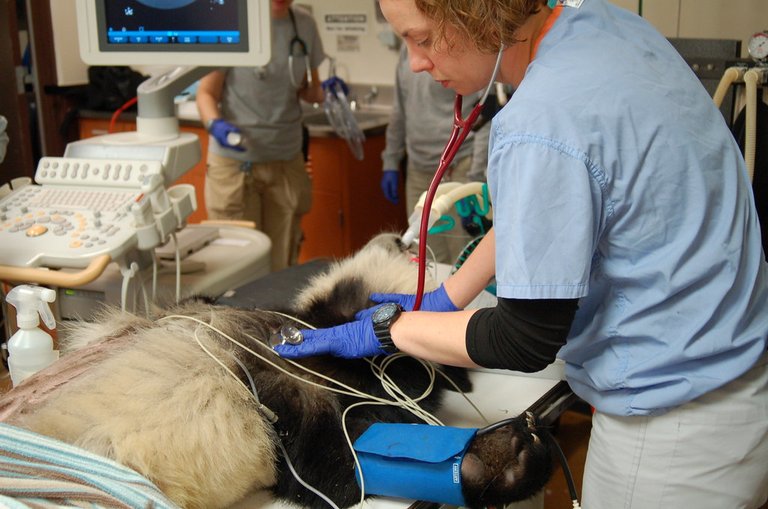I am one of those who agree with the fact that technology has helped us in a great way, in the world of animals which I love to learn and share about, technology has done a lot of good and brought about tremendous changes as well.
In today's topic, I will be sharing on nuclear technology and the impact it has made on the lives of animals. One of the very good innovative ways to improve agricultural practices generally is through the involvement of nuclear technology.
For most of us, when we hear the word nuclear, we begin to think of nuclear weapons and all, but there is more to nuclear technology than that, there is a lot of helpful side to this form of technology.
With the use of radiation techniques or isotopes, the control of pests and diseases becomes a possibility, it also becomes possible to increase the production of
crops, alongside the protection of water and land resources to ensure food safety.
The existence of nuclear technology has helped to detect, control, and prevent transboundary animals and Zoonotic diseases. A place like Be like ze, for instance, teamed up with the joint FAO/IAEA center, and they were able to establish their own Animal Health Molecular Diagnostic Laboratory.
Image Reference
With the existence of appropriate equipment, and good training, lab technicians have been able to use real-time Polymerase Chain Reaction (PCR) tests, which is a molecular nuclear technique to help detect diseases very fast. With this very quick and accurate diagnosis, they would inform field workers who would swing into action and be able to control the disease before it turns into a major outbreak. The use of PCR tests has been used to detect animals very fast, I mean in less than a day.
Past nuclear fallouts are also helping scientists measure and assess soil erosion, the radioactive nuclides left behind after the occurrence of a nuclear event could help scientists to determine the health condition of soils and the rate of erosion.
Nuclear techniques can also improve food safety and quality control by detecting and eliminating harmful residues and the contamination of food products. Crop breeds that are developed using nuclear technology produce a more improved form of variety that can adapt better to climate change, as well as help vulnerable countries ensure the existence of food and nutritional security.
Real-time Rt-PCR is a good example of a nuclear-derived technique that gives room for scientists to be able to detect specific genetic materials of disease-causing pathogens. With the use of chemical reagents that have fluorescent dyes, which are used to mark the genetic material of the pathogeny, scientists can almost get an immediate result even while the process is still ongoing.
Image Reference

With the help of nuclear techniques, irradiated vaccines can be developed as well, these vaccines do not contain chemicals or other compounds used for inactivated vaccines, not only does this happen, but it also provides a cost-effective approach to the preparation of vaccines.
Word has it that, Ethiopia can produce over 260 million animal vaccine doses in a year, all with the help of nuclear technology.
The help of nuclear and related technologies, together with other UN organizations and leading research institutes have been able to significantly contribute to the improvement of livestock productivity.
This technology has helped to control and prevent transboundary animal and Zoonotic diseases, alongside ensuring the environment is protected. It doesn't stop there, these technologies now help to discriminate between rinderpest-infected animals, animals that are protected with vaccines, and those that are unexposed. This has contributed to the success of the eradication of the rinderpest program that has helped to save Africa $1 billion US every year.
I believe agriculture is important to both humans and animals alike, once crops begin to grow, farmers make use of techniques to maximize yield. There are times when nuclear techniques are not about the improvement of growth, but rather stopping the growth of harmful organisms.
Even after harvesting the crops, nuclear science and technology play a significant role in the improvement of the abundance of food and its quality. The idea of food irradiation isn't new as it has been used to improve the safety of food and increase the shelf life of the produce, this is achieved through the destruction of microorganisms and pets that cause illness and rots all without leaving behind any form of residual radiation.
References
IAEA.org/sites/animal-production
Peaceful-uses-of-nuclear-science
Congratulations @futurekr! You have completed the following achievement on the Hive blockchain And have been rewarded with New badge(s)
Your next target is to reach 4000 upvotes.
You can view your badges on your board and compare yourself to others in the Ranking
If you no longer want to receive notifications, reply to this comment with the word
STOPEven though the nuclear technology might offer positivity, but I still believe it still have a lot of side effects that we are not actually aware of
Of course, nuclear technology has its negative effects, but I just thought to point out some of the possible good sides to it, so we know that it is not completely bad after all. Thanks for your comment.
Thanks for your contribution to the STEMsocial community. Feel free to join us on discord to get to know the rest of us!
Please consider delegating to the @stemsocial account (85% of the curation rewards are returned).
You may also include @stemsocial as a beneficiary of the rewards of this post to get a stronger support.